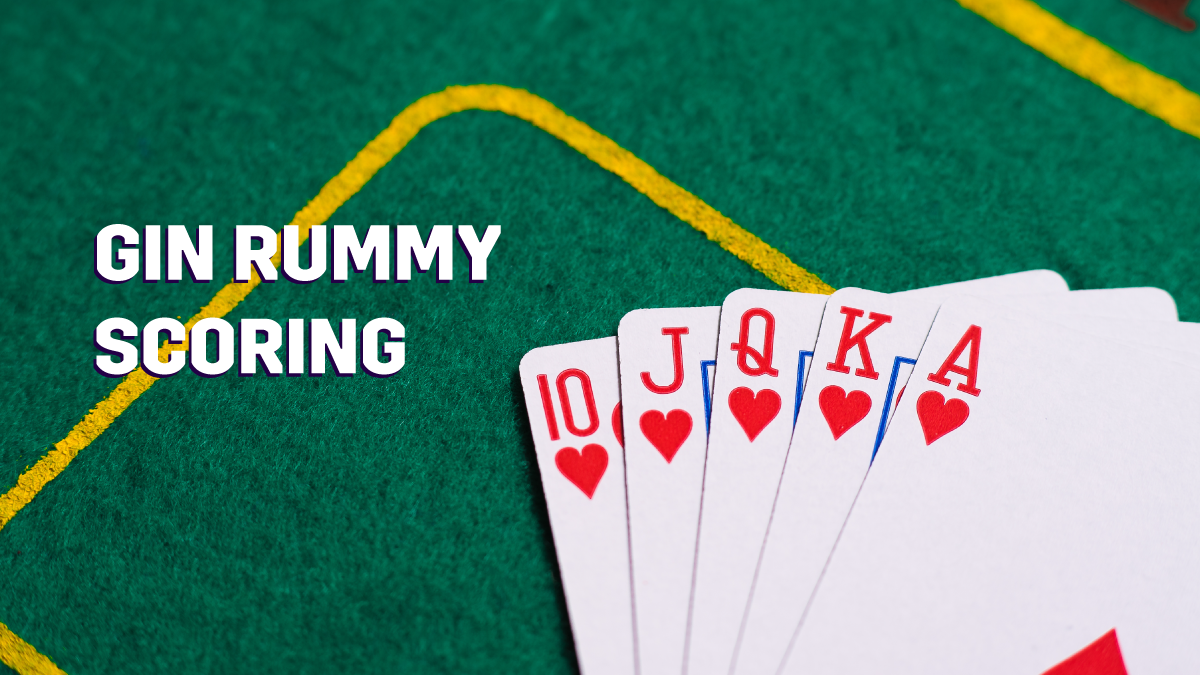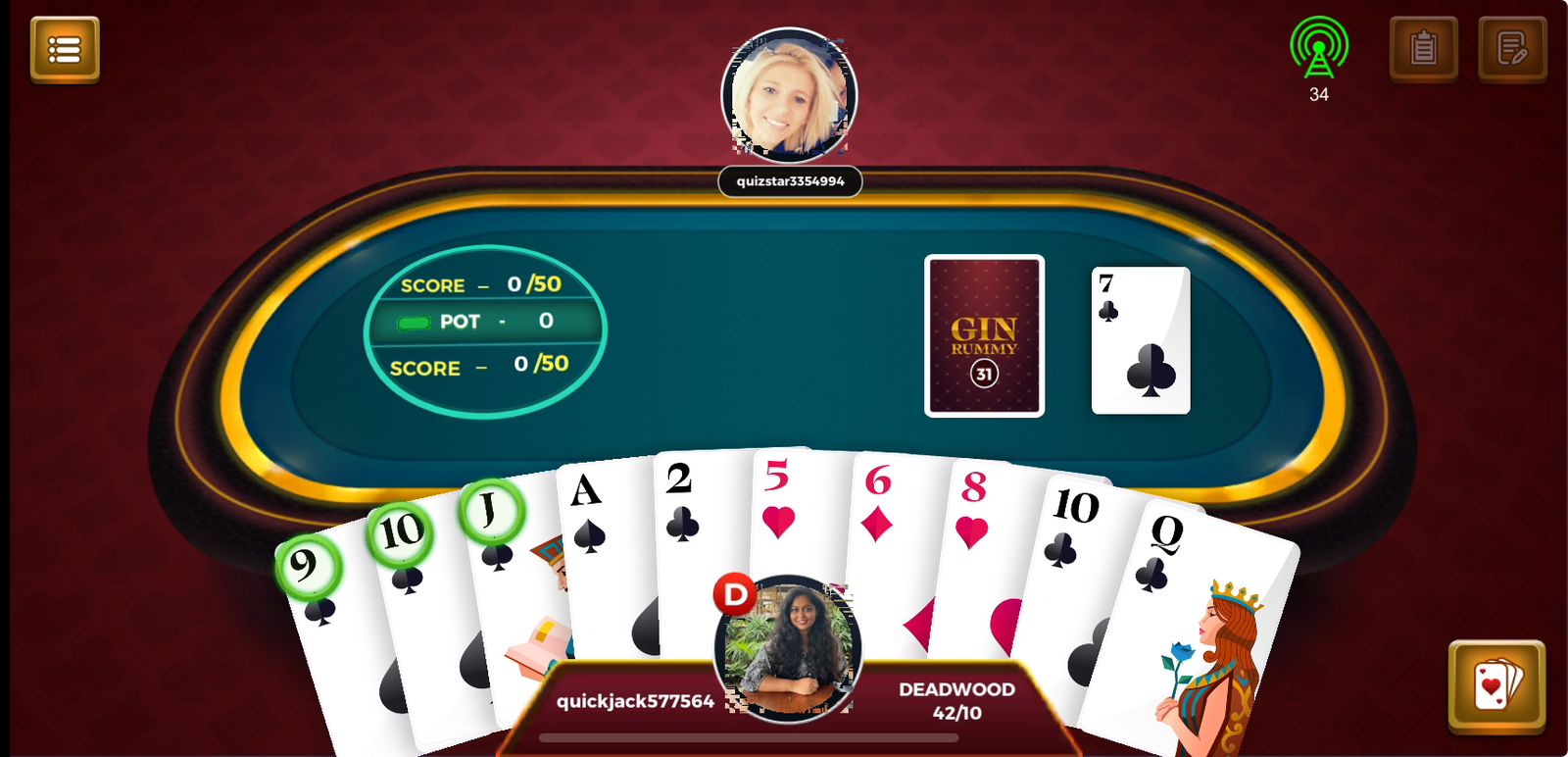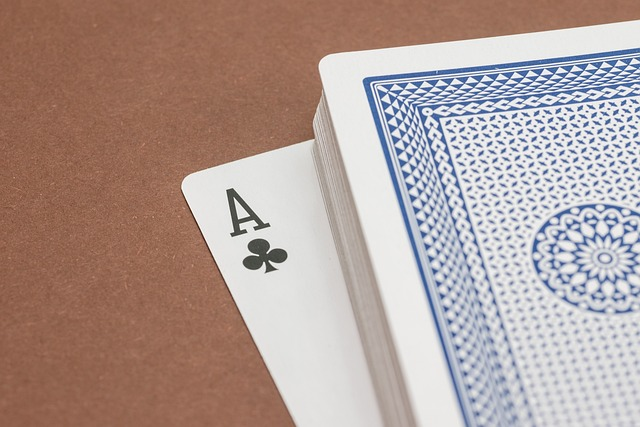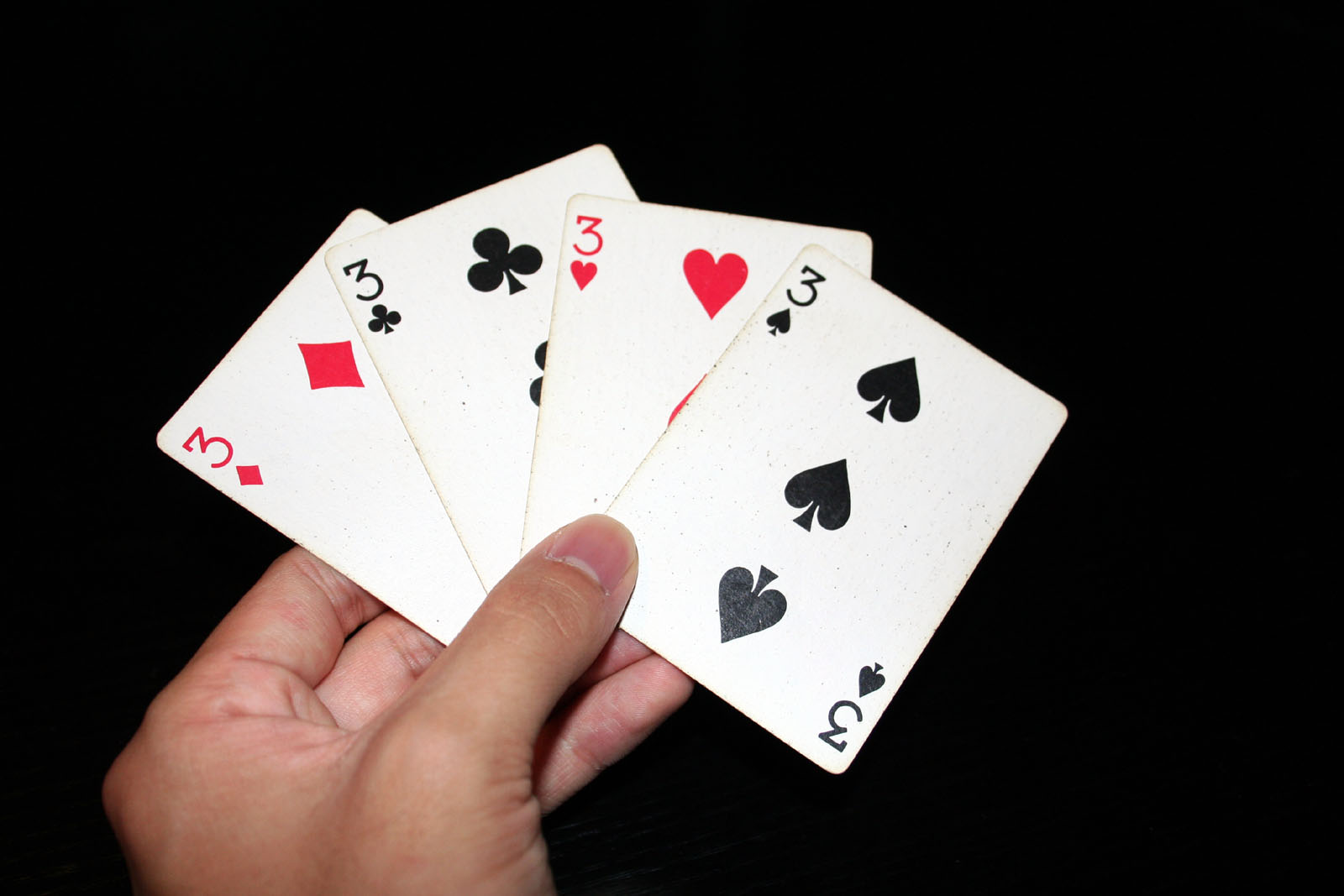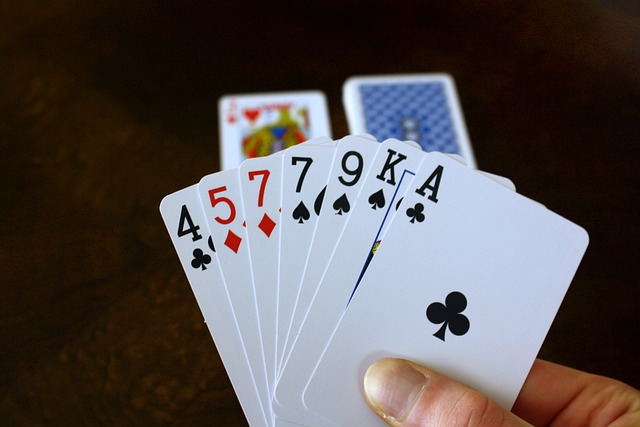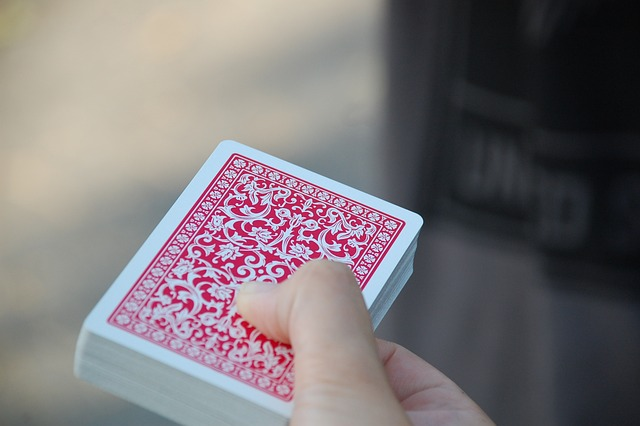Gin Rummy is one of those fun games that almost every card game enthusiast has a thing for.
A classic card game that’s existed for a long time, Gin Rummy is played by matching cards in sets and runs of three or four cards and gathering points from all your unmatched cards. When a player knocks or attempts to score points in a round by summing up their mismatched cards, you can tally up the points distribution and note them on a sheet of paper to keep track of scores.
While knowing the gin rummy rules is crucial, you must also know the scoring system while playing gin rummy!
In this blog, you’ll learn more about Gin Rummy scoring and bonuses to ensure you never miss out on an important point. Let’s dive in to understand the essential rules as you play gin rummy!
Read More: How to Play Gin Rummy
Table of Contents
Basic Gin Rummy Rules
-
Gin Rummy is a two-player game.
-
The goal is to form sets or runs of cards and knock when the value of your unmatched cards is low.
-
Players use a standard 52-card deck. Aces are low, worth 1 point, and face cards are worth 10 points each.
-
Each player gets 10 cards. The rest form the draw pile, with one card face-up to start the discard pile.
-
On your turn, draw one card from the draw pile or take the top card from the discard pile. Then, discard one card.
-
Arrange cards in your hand into sets (3 or 4 cards of the same rank) or runs (3 or more consecutive cards of the same suit). Lay them down face-up on the table.
-
If you can meld all your cards simultaneously, you Go Gin and win a gin bonus.
-
Play multiple rounds until a player reaches the agreed-upon score limit.
Read More: Gin Rummy Tips & Tricks
Gin Rummy Scoring
Aces are scored at a single point, face cards at ten, and every other card is scored at their respective numerical values. This is important to remember when you calculate the score.
Deadwood Points
Deadwood points are the value of the unmatched cards in your hand. The goal is to have as few deadwood points in your unmatched cards as possible.
All the card points that are unmelded are deadwood points.
To calculate your deadwood points in gin rummy scoring, you just have to add up the deadwood cards. For instance, if J-3-K is unmelded, your points are 23 at the end of the game.
Knocking
After picking a card, you can end the play if you can form valid combinations (i.e., sets and runs) with the cards in your hand. You can do this by discarding a single facedown card onto the discard pile and revealing your entire hand, assembling it as much as possible into runs (sequences) and sets (groups of equal cards).
Any remaining cards in your hand that do not form part of a valid combination are deemed unmatched or deadwood. The total value of deadwood should be ten points or less. When you end play in this fashion, it is called knocking; if the opponent knocks, the round ends, and the one with fewer points wins the game.
Lay Off
When the opponent knocks, the opponent of the knocking player needs to spread their cards facing up and arrange them into runs and sets wherever possible. Given the knocker didn’t go gin, the opponent can also lay off any unmatched cards by making use of them to extend runs and sets laid out by the knocker, i.e., by adding a fourth card of the same rank to a cluster of three, or other following cards of the same suit to either end of a sequence.
It is essential to note that cards can’t be laid off on deadwood. For instance, if the knocker possesses a pair of twos as deadwood and the opponent has a third two, this can’t be laid off over the twos to complete a set.
When a player goes gin, the opponent cannot lay off any cards. The knocker also cannot lay off cards on an opponent’s runs or sets.
Going Gin
Knocking when you have zero unmatched cards is called Going Gin or Go Gin. It offers a special gin bonus. Though most hands that go gin comprise three combinations of four, three, and three cards, it is also acceptable to go gin with two five-card sequences.
Read More: Gin Rummy Variations
How To Award Points To Players?
Let’s understand more about scoring gin rummy and how points are awarded.
Knock points
Once a player knocks and layoffs are made, the knocking player gets a score equal to the difference between both hands. For instance, if a player knocks with an 8, and the opponent has 10 deadwood points after laying off, the knocker receives 2 points for the hand. It is considered a misdeal if a player can knock before any cards are accepted. If a player knocks before any cards are accepted, it is deemed a misdeal.
Undercut (or under knocking)
It happens when the defending player possesses a deadwood value lower than or equal to the knocker’s (this can happen naturally or by laying off post-knock). In this scenario, the defender scores an undercut bonus of twenty-five points and the difference in deadwood value in the knocker’s hand. In some rule sets, the bonus is only ten or twenty points or not awarded in the situation of a tie.
Game bonus
Once a player acquires 500 points (or a previously agreed-upon number), the game ends, and the player gets a bonus of 100 points (or a previously agreed-upon number).
Line bonus or box bonus
It gets added when the game concludes. For each hand of a player who wins the game, twenty-five bonus points get added to their score.
Big Gin
Before you knock, if all eleven cards in your hand form a legally acceptable gin, you can retain the extra card as part of the hand and get thirty-one points in addition to the entire deadwood count in the opponent’s hand. In some rule sets, you can also be awarded fifty points or another previously established amount along with the entire deadwood count.
More Gin Bonuses
Here are special bonus points you must look out for when it comes to gin rummy scoring.
Gin bonus
After they go gin, a player gets a bonus. So, how many points do they get? It is twenty-five bonus points plus the total deadwood count in the opponent’s hand. There is no opportunity to lay off whenever a player goes gin. These extra bonus points are the gin bonus.
Line bonus or box bonus
The bonus points get added when the game concludes. For each hand a player wins during the game, 25 points get added to their score. Here, you get your points plus a bonus. But this is for the one who wins the game.
Shutout bonus
If a game ends with the winner having won each hand, the bonus points for each hand are doubled before adding the line bonus.
In certain variations, when a match concludes with one player in the lead by fifty points, that player loses by default.
Keeping Score & Winning Gin Rummy
Once the round is concluded, both players need to lay their cards face-up on the table when one of the players knocks. During this point, the non-knocker can lay off deadwood cards onto their opponent’s melds.
For example, if the non-knocking player has a three and a four deadwood card, they can add it to the opponent’s run of 4-5-6 or 5-6-7.
You can only lay off cards when no player reaches gin.
Here’s a summation of how the scoring system works. The melds alone do not carry any points. One player deducts their deadwood points from the other.
For instance, if you possess a 4 and a 5, and your opponent possesses a 10 and a Jack, you deduct 9 from 20 and get 11 points.
If a player gets gin, they automatically get a gin bonus of twenty-five points. There is no deduction involved. The game continues until the winner gets to the previously agreed-upon score over several rounds. In most games, it is whoever gets to a hundred points first. This is how gin rummy scoring works.
FAQs
How do you score regular gin games?
When it comes to playing cards, Gin Rummy is a classic that’s still popular. It’s played using all the cards of a standard deck. Here, players score points based on deadwood, which are unmatched playing cards. When a player knocks with lower deadwood than their opponent’s cards, the player scores the difference in the point total. If the opponent has lower deadwood, they score the difference plus a bonus, which is the final point total. Going gin (no unmatched cards) earns a 25-point bonus, and a big gin (all cards matched) earns an even bigger bonus. The first to reach the total score wins the game.
What are the basic rules for the gin rummy game?
In Gin Rummy, players aim to form sets (3 or 4 cards of the same rank) or runs (3 or more cards in sequence of the same suit). With each turn, players draw a card and discard one. When they have formed all their cards into sets or runs, they can knock to end the round and proceed to the next round until one player reaches the set total score.
What is the undercut score in a gin rummy game?
The undercut score is the points awarded to the player who did not knock when their deadwood (unmatched cards) has a lower value than the knocker’s deadwood. The undercut score is the difference in deadwood points between the two hands, plus a bonus of 25 points.

